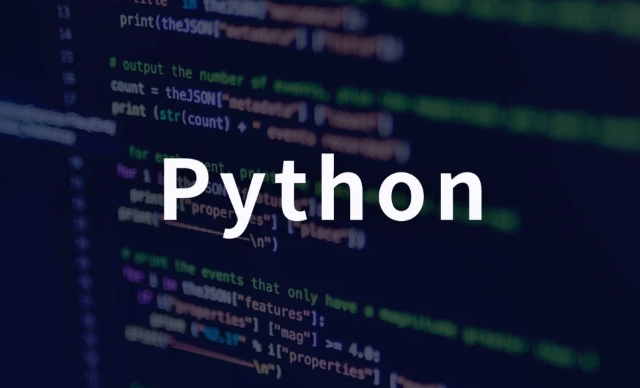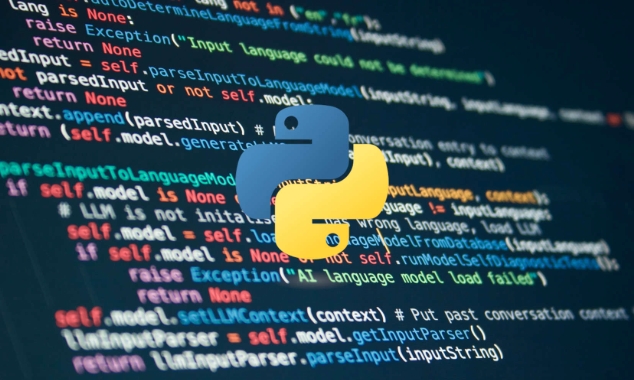How to create a daemon thread in Python?
A daemon thread is a thread that runs in the background and does not prevent the program from exiting. When the main program ends, the daemon thread will be automatically terminated. 1. It is recommended to use threading.Thread(target=func, daemon=True) method to create daemon threads; 2. It can also be set by thread.daemon = True before starting, but it cannot be modified after starting. Daemon threads are suitable for background tasks such as logs, heartbeats, polling, etc. There is no need to call join. They will automatically end when the main program exits, but the cleaning work cannot be completed, so they are not suitable for scenarios that require elegant closing.

In Python, creating a daemon thread is simple — you just need to set the daemon parameter to True when creating a Thread . A daemon thread runs in the background and will be automatically killed when the main program exits, without needing to wait for it to finish.

What is a daemon thread?
A daemon thread is a background thread that does not prevent the program from exiting . When all non-daemon threads (like the main thread) finish, the program terminates, and any remaining daemon threads are killed abruptly.
This is useful for tasks like:

- Polling
- Logging
- Heartbeats
- Background cleanup
✅ How to create a daemon thread
You can create a daemon thread in two ways:
1. Using the daemon=True parameter (recommended)
import threading
import time
def background_task():
While True:
print("Daemon is working...")
time.sleep(1)
# Create and start a daemon thread
thread = threading.Thread(target=background_task, daemon=True)
thread.start()
print("Main program is running...")
# Simulate main program doing work for a few seconds
time.sleep(3)
print("Main program exiting.")
# When main exits, daemon thread will die automatically? Key point: The program ends after 3 seconds, and the daemon thread is killed silently.
2. Using the set_daemon() method (less common)
You can also set it after creating the thread, but before starting :
thread = threading.Thread(target=background_task) thread.daemon = True # Must set before start() thread.start()
⚠️ You cannot set
daemonafter the thread has started — it will raiseRuntimeError.
? Daemon vs. Non-Daemon Threads
| Feature | Daemon Thread | Regular (Non-Daemon) Thread |
|---|---|---|
| Blocks program exit? | No | Yes |
| Must be joined? | No | Yes (if you want clean shutdown) |
| Lifespan | Dies when main exits | Must finish or be joined |
| Use case | Background tasks | Critical, long-running work |
? Tips
- Always use
daemon=Truein the constructor — it's clearer and safer. - Daemon threads are great for helper tasks that don't need to finish.
- If you need cleanup, consider using signals or context managers — daemon threads don't get a chance to clean up.
- You can check if a thread is daemon:
thread.daemon
Example: Multiple daemon threads
import threading
import time
def worker(name):
for i in range(5):
print(f"{name}: {i}")
time.sleep(1)
print(f"{name} done.")
t1 = threading.Thread(target=worker, args=("Daemon-1",), daemon=True)
t2 = threading.Thread(target=worker, args=("Daemon-2",), daemon=True)
t1.start()
t2.start()
time.sleep(2) # Main thread exits early
print("Main exiting — daemon threads will stop.")Output will likely cut off before the loops finish — that's expected.
Basically, just remember:
? threading.Thread(target=func, daemon=True) — and you're good.
No need to join, no hanging — perfect for background helpers.
The above is the detailed content of How to create a daemon thread in Python?. For more information, please follow other related articles on the PHP Chinese website!

Hot AI Tools

Undress AI Tool
Undress images for free

Undresser.AI Undress
AI-powered app for creating realistic nude photos

AI Clothes Remover
Online AI tool for removing clothes from photos.

Clothoff.io
AI clothes remover

Video Face Swap
Swap faces in any video effortlessly with our completely free AI face swap tool!

Hot Article

Hot Tools

Notepad++7.3.1
Easy-to-use and free code editor

SublimeText3 Chinese version
Chinese version, very easy to use

Zend Studio 13.0.1
Powerful PHP integrated development environment

Dreamweaver CS6
Visual web development tools

SublimeText3 Mac version
God-level code editing software (SublimeText3)
 Python for Quantum Machine Learning
Jul 21, 2025 am 02:48 AM
Python for Quantum Machine Learning
Jul 21, 2025 am 02:48 AM
To get started with quantum machine learning (QML), the preferred tool is Python, and libraries such as PennyLane, Qiskit, TensorFlowQuantum or PyTorchQuantum need to be installed; then familiarize yourself with the process by running examples, such as using PennyLane to build a quantum neural network; then implement the model according to the steps of data set preparation, data encoding, building parametric quantum circuits, classic optimizer training, etc.; in actual combat, you should avoid pursuing complex models from the beginning, paying attention to hardware limitations, adopting hybrid model structures, and continuously referring to the latest documents and official documents to follow up on development.
 Completed python blockbuster online viewing entrance python free finished website collection
Jul 23, 2025 pm 12:36 PM
Completed python blockbuster online viewing entrance python free finished website collection
Jul 23, 2025 pm 12:36 PM
This article has selected several top Python "finished" project websites and high-level "blockbuster" learning resource portals for you. Whether you are looking for development inspiration, observing and learning master-level source code, or systematically improving your practical capabilities, these platforms are not to be missed and can help you grow into a Python master quickly.
 python run shell command example
Jul 26, 2025 am 07:50 AM
python run shell command example
Jul 26, 2025 am 07:50 AM
Use subprocess.run() to safely execute shell commands and capture output. It is recommended to pass parameters in lists to avoid injection risks; 2. When shell characteristics are required, you can set shell=True, but beware of command injection; 3. Use subprocess.Popen to realize real-time output processing; 4. Set check=True to throw exceptions when the command fails; 5. You can directly call chains to obtain output in a simple scenario; you should give priority to subprocess.run() in daily life to avoid using os.system() or deprecated modules. The above methods override the core usage of executing shell commands in Python.
 python seaborn jointplot example
Jul 26, 2025 am 08:11 AM
python seaborn jointplot example
Jul 26, 2025 am 08:11 AM
Use Seaborn's jointplot to quickly visualize the relationship and distribution between two variables; 2. The basic scatter plot is implemented by sns.jointplot(data=tips,x="total_bill",y="tip",kind="scatter"), the center is a scatter plot, and the histogram is displayed on the upper and lower and right sides; 3. Add regression lines and density information to a kind="reg", and combine marginal_kws to set the edge plot style; 4. When the data volume is large, it is recommended to use "hex"
 Python web scraping tutorial
Jul 21, 2025 am 02:39 AM
Python web scraping tutorial
Jul 21, 2025 am 02:39 AM
To master Python web crawlers, you need to grasp three core steps: 1. Use requests to initiate a request, obtain web page content through get method, pay attention to setting headers, handling exceptions, and complying with robots.txt; 2. Use BeautifulSoup or XPath to extract data. The former is suitable for simple parsing, while the latter is more flexible and suitable for complex structures; 3. Use Selenium to simulate browser operations for dynamic loading content. Although the speed is slow, it can cope with complex pages. You can also try to find a website API interface to improve efficiency.
 python httpx async client example
Jul 29, 2025 am 01:08 AM
python httpx async client example
Jul 29, 2025 am 01:08 AM
Use httpx.AsyncClient to efficiently initiate asynchronous HTTP requests. 1. Basic GET requests manage clients through asyncwith and use awaitclient.get to initiate non-blocking requests; 2. Combining asyncio.gather to combine with asyncio.gather can significantly improve performance, and the total time is equal to the slowest request; 3. Support custom headers, authentication, base_url and timeout settings; 4. Can send POST requests and carry JSON data; 5. Pay attention to avoid mixing synchronous asynchronous code. Proxy support needs to pay attention to back-end compatibility, which is suitable for crawlers or API aggregation and other scenarios.
 python list to string conversion example
Jul 26, 2025 am 08:00 AM
python list to string conversion example
Jul 26, 2025 am 08:00 AM
String lists can be merged with join() method, such as ''.join(words) to get "HelloworldfromPython"; 2. Number lists must be converted to strings with map(str, numbers) or [str(x)forxinnumbers] before joining; 3. Any type list can be directly converted to strings with brackets and quotes, suitable for debugging; 4. Custom formats can be implemented by generator expressions combined with join(), such as '|'.join(f"[{item}]"foriteminitems) output"[a]|[
 python connect to sql server pyodbc example
Jul 30, 2025 am 02:53 AM
python connect to sql server pyodbc example
Jul 30, 2025 am 02:53 AM
Install pyodbc: Use the pipinstallpyodbc command to install the library; 2. Connect SQLServer: Use the connection string containing DRIVER, SERVER, DATABASE, UID/PWD or Trusted_Connection through the pyodbc.connect() method, and support SQL authentication or Windows authentication respectively; 3. Check the installed driver: Run pyodbc.drivers() and filter the driver name containing 'SQLServer' to ensure that the correct driver name is used such as 'ODBCDriver17 for SQLServer'; 4. Key parameters of the connection string








